How can you clean a kettle with citric acid?
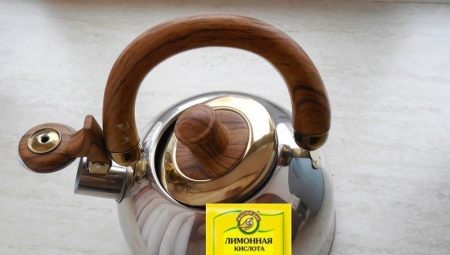
No matter how clean the water is, when it is boiled in a kettle, scale will now and then form. It is a lime-salt precipitate that gradually accumulates on the walls of the vessel and heating elements, which leads to their destruction.
In addition, scale negatively affects human health, so it must be removed by regular cleaning.
To clean the inside of the kettle from limescale and salt deposits, it is not necessary to purchase special products containing aggressive chemicals. To do this, you can use regular citric acid.
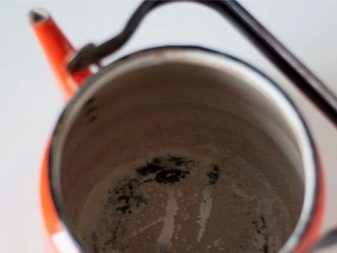
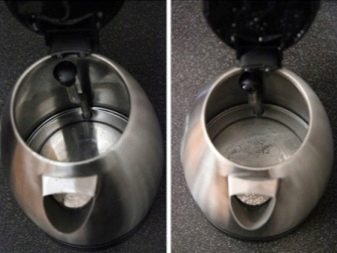
Peculiarities
Tap water contains a large amount of impurities that enter it during several stages of cleaning required to remove debris and disinfect. But at the same time, the liquid becomes more rigid, therefore it is not recommended to use it raw. Thanks to modern filters at home, water can be cleaned of most of the impurities, including chlorine and heavy metals, but they are not able to rid it of lime. However, much less sediment will form in the filtered liquid.
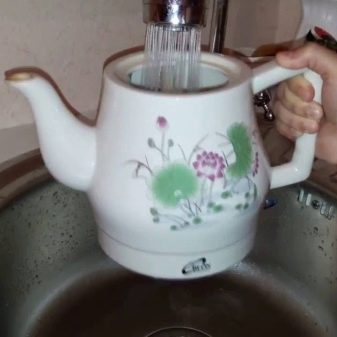

The sediment that appears as a result of boiling water gradually accumulates on the inner surfaces of the kettle and over time forms dense salt layers. Scale helps to reduce the heat transfer of materials, therefore, as a result of heating, the vessel heats up and simply bursts. If an electric kettle is used in the house, then its heating element usually fails, because. it is on it that lime-salt deposits accumulate.
Mandatory removal of scale is due not only to damage to dishes, but also a negative impact on human health. When drinking water from an unclean teapot, lime-salt sediment will enter the body, which will lead to the development of diseases of the stomach, liver and kidneys.
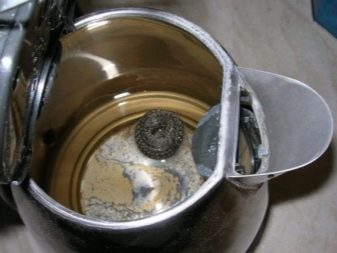

Advantages
Descaling with citric acid is not only effective but also safe. After using special cleaning agents, the kettle must be thoroughly washed and boiled water in it several times in order to completely get rid of the chemicals. Otherwise, aggressive elements will enter the body, which can lead to poisoning, an allergic reaction or chemical burns of the mucous membranes. While after using citric acid, it will be enough to wash the vessel under running water.
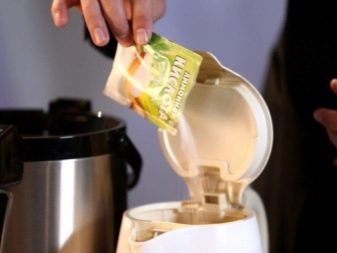

A dense layer of scale corrodes the metal, leaving cracks, chips and scratches on it that cannot be seen with the naked eye. If damaged elements are exposed to aggressive substances contained in cleaning agents, the rate of their destruction will increase several times. In addition, particles of chemicals will remain in small cracks and will certainly enter the human body along with water.
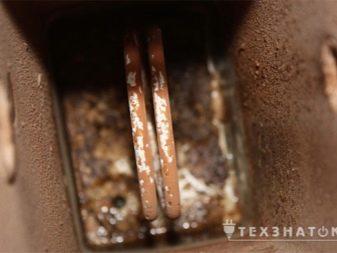

Citric acid will gently clean electric, metal, glass and enamel teapots. At the same time, after the procedure, not only lime-salt sediment will not remain, but also harmful particles. It should also be noted that this method of descaling is available, because 1-2 sachets of citric acid will cost much lessthan a special cleaning agent.
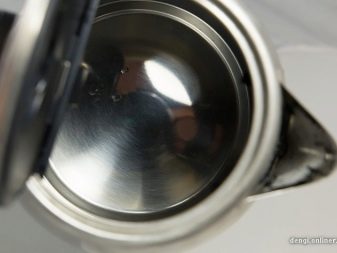

Removing a thin layer of limescale
It takes a minimum amount of time and effort to remove a thin layer of limescale from the kettle. But it should be borne in mind that the effectiveness of the procedure will depend on the proportions of citric acid in relation to the liquid. For every liter of water, 40 g of crystallized acid should be taken. You can also use 1 or 2 medium lemons, which should be cut into large cubes beforehand.
The container to be cleaned does not have to be completely filled with water, its level should be sufficient to cover only surfaces with scale.
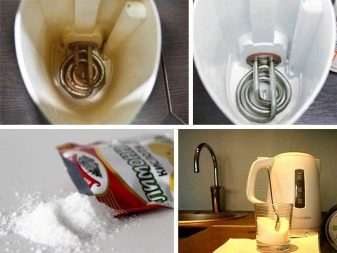

Put the kettle filled with lemon liquid on the stove and bring the contents to a boil. Then you should open the lid and continue to boil water over low heat for about 2-3 minutes. When removing plaque from the electric kettle, the citric acid solution should be boiled again 3 minutes after the first cycle. In the latter case, you do not need to open the lid of the utensil.

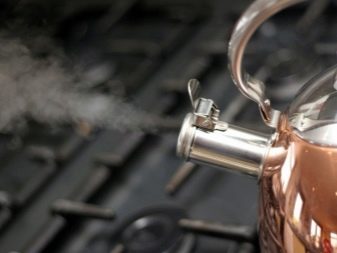
The kettle with hot water does not need to be washed immediately, let it cool naturally. As it cools, citric acid will gradually corrode the scale. The cooled cloudy liquid together with particles of lime-salt deposit should be poured out. If after the procedure there are traces of plaque on the walls and the heating element, it is recommended to re-clean. In addition, if the first time it was not possible to remove even part of the scale, the concentration of citric acid should be doubled.

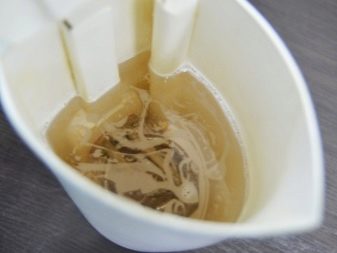
Once the descaling has been completed, you can end the cleaning procedure. The kettle must be thoroughly washed with a dishwashing sponge and detergent. Then the first and second water after boiling must be poured out, and only from the third cycle will it be usable.
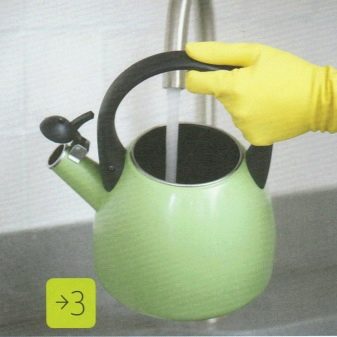
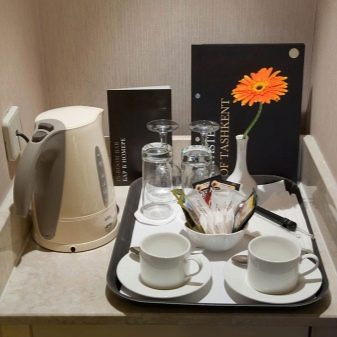
A similar procedure can be carried out using carbonated drinks, such as lemonade, which are not brightly colored. They contain citric and phosphoric acids, which have a destructive effect on lime deposits. A dirty kettle should be filled with soda and left with the lid open until the gases are completely exhausted - for about 2 hours. Then the liquid is brought to a boil and left to cool, as is the case with the lemon solution.

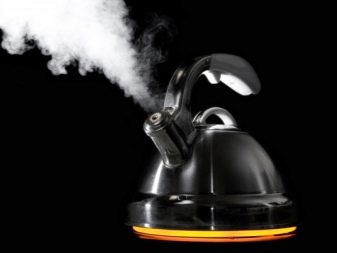
Removing a thick layer of plaque
Despite the effectiveness of citric acid, it must be used with vinegar to remove a thick layer of limescale. It should be noted that this cleaning is more aggressive, therefore it is important to carry out the procedure correctly so as not to break the kettle and not harm the body.
It is recommended to use citric acid in combination with vinegar for cleaning stainless steel or enamel coated dishes.
This method is also suitable for electrical appliances, provided that they are equipped with a hidden heating element, since otherwise its galvanic coating may be damaged. In addition, it is undesirable to remove scale with vinegar solution in plastic containers.
For the procedure, you will need table vinegar in the amount of 0.5 cups per 1 liter of water, and 60 g of citric acid. First, fill the kettle with vinegar and leave it for 20 minutes. Then citric acid is added to the liquid and brought to a boil, after which it is boiled for several minutes with the lid ajar.
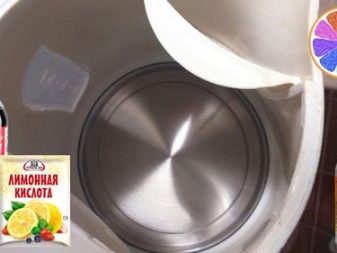
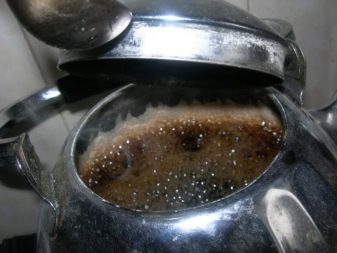
When cleaning an electric kettle, boil the water with the lid closed. twice with an interval of 3 minutes... Let the hot lemon-vinegar solution cool before pouring it out. If the scale has not been completely removed, the procedure should be repeated, but if it has been removed safely, the container must be thoroughly washed with detergent and several portions of water boiled in it.
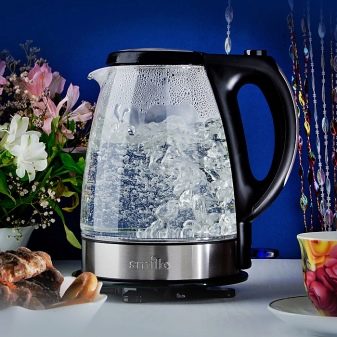
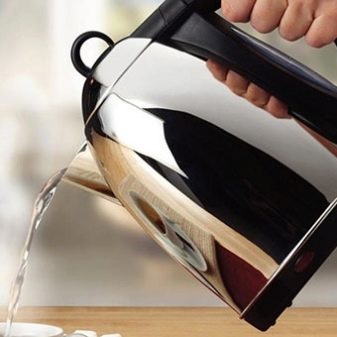
Old pollution
Getting rid of multi-layer, dense limescale is the most difficult task. As a rule, such a neglected condition is observed in old enamel teapots. Thick layers of limescale often erode into the walls of the kettle so that when they are removed, you can notice thinning of the metal and even cracks. In no case should you scrape off the layers of scale, since this will entail even greater damage to the inner surfaces of the container.
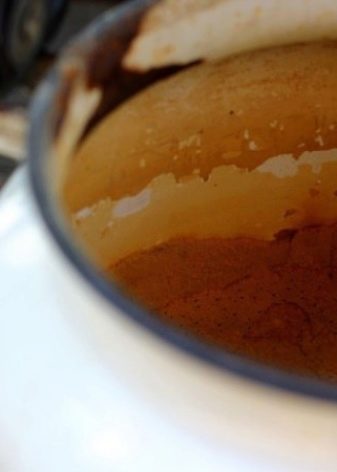
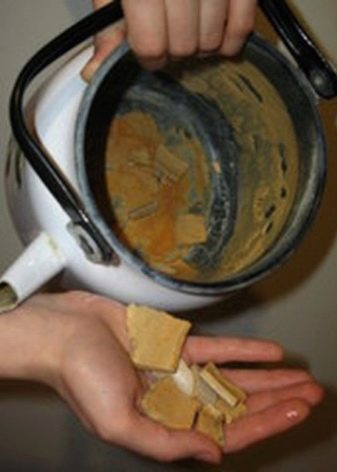
You will need baking soda, citric acid, and apple cider vinegar or grape vinegar to remove layered plaque. First, you need to pour water and soda into the kettle at the rate of 2 tbsp. l. powder per liter of water and boil the contents for about 20 minutes over low heat. Then drain the soda solution, rinse the kettle and fill it with water with citric acid at the rate of 60 g of dry matter per liter of water. The liquid should be boiled for 5-7 minutes, then leave it in a container until it cools completely.


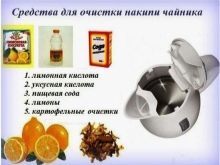
The above steps must be performed twice in order to loosen the scale well. Only after that the kettle is thoroughly rinsed and proceeds to the third part of the procedure - vinegar treatment. Apple cider or grape vinegar is poured into a kettle for 1/3 of its volume and 2/3 of water is added. The liquid must be boiled over low heat for at least half an hour. It should be noted that while cleaning the kettle, the room must be constantly ventilated from vinegar fumes.
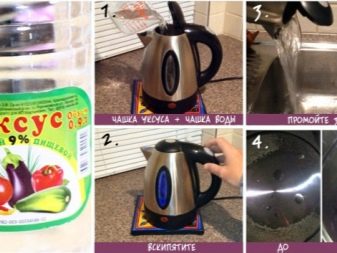

After half an hour, the multi-layer scale will become pasty and can be easily removed with a wooden or plastic spatula. At the end of the procedure, the container must be thoroughly washed with a sponge and detergent and several portions of water must be boiled in it.
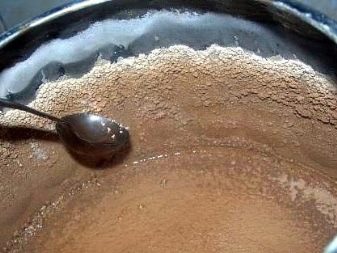

Prophylaxis
To prevent the build-up of lime-salt sediment inside the kettle, it is necessary to carry out regular preventive cleaning. To do this, fill the container with water and add citric acid in the amount of 1 tbsp. l. dry matter for each glass of liquid. The resulting solution is left in the kettle for 2 hours, after which it is thoroughly washed with a sponge and detergent.
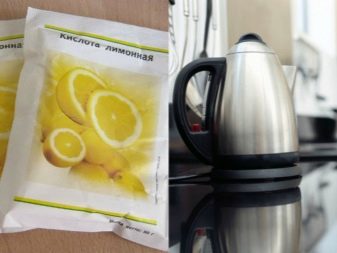

The procedure should be repeated twice a month if the tap water is too hard. If the water is soft, then prophylaxis can be carried out 1 time in 2-3 months. It is important to remember that after each cleaning it is necessary to thoroughly rinse the kettle from acid and sediment residues.
For information on how to clean a kettle with citric acid, see the next video.








